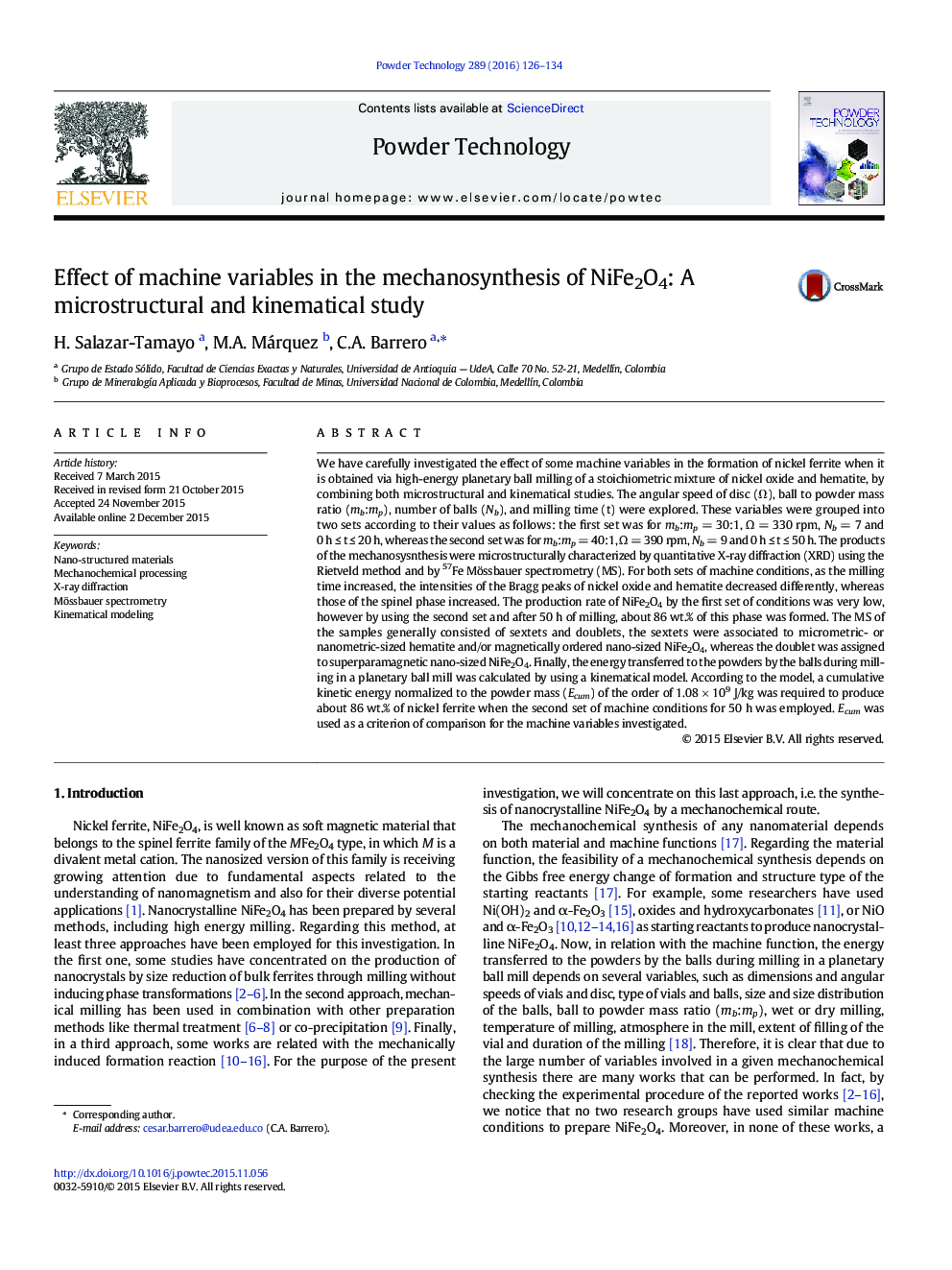| کد مقاله | کد نشریه | سال انتشار | مقاله انگلیسی | نسخه تمام متن |
|---|---|---|---|---|
| 235309 | 465632 | 2016 | 9 صفحه PDF | دانلود رایگان |

• NiFe2O4 was fabricated via high-energy planetary ball milling of NiO and α-Fe2O3.
• Ecum was used as a parameter of comparison for two different sets of machine conditions.
• Ecum ≈ 1.08 × 109 J/kg produced 86 wt.% of NiFe2O4 using the second set of machine conditions.
We have carefully investigated the effect of some machine variables in the formation of nickel ferrite when it is obtained via high-energy planetary ball milling of a stoichiometric mixture of nickel oxide and hematite, by combining both microstructural and kinematical studies. The angular speed of disc (Ω), ball to powder mass ratio (mb:mp), number of balls (Nb), and milling time (t) were explored. These variables were grouped into two sets according to their values as follows: the first set was for mb:mp = 30:1, Ω = 330 rpm, Nb = 7 and 0 h ≤ t ≤ 20 h, whereas the second set was for mb:mp = 40:1, Ω = 390 rpm, Nb = 9 and 0 h ≤ t ≤ 50 h. The products of the mechanosysnthesis were microstructurally characterized by quantitative X-ray diffraction (XRD) using the Rietveld method and by 57Fe Mössbauer spectrometry (MS). For both sets of machine conditions, as the milling time increased, the intensities of the Bragg peaks of nickel oxide and hematite decreased differently, whereas those of the spinel phase increased. The production rate of NiFe2O4 by the first set of conditions was very low, however by using the second set and after 50 h of milling, about 86 wt.% of this phase was formed. The MS of the samples generally consisted of sextets and doublets, the sextets were associated to micrometric- or nanometric-sized hematite and/or magnetically ordered nano-sized NiFe2O4, whereas the doublet was assigned to superparamagnetic nano-sized NiFe2O4. Finally, the energy transferred to the powders by the balls during milling in a planetary ball mill was calculated by using a kinematical model. According to the model, a cumulative kinetic energy normalized to the powder mass (Ecum) of the order of 1.08 × 109 J/kg was required to produce about 86 wt.% of nickel ferrite when the second set of machine conditions for 50 h was employed. Ecum was used as a criterion of comparison for the machine variables investigated.
The aims of our work were to compare Ecum with the amount of NiFe2O4 formed, i.e. to find how Ecum can be related with the mechanosynthesis of NiFe2O4 phase, and also to investigate for appropriate machine variables to achieve it. We have found that as Ecum increases, the amount of NiFe2O4 formed increases.Figure optionsDownload as PowerPoint slide
Journal: Powder Technology - Volume 289, February 2016, Pages 126–134